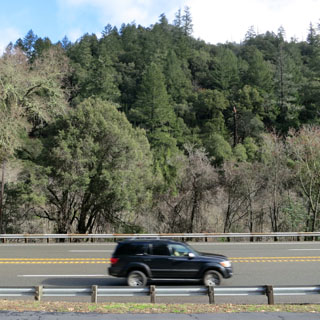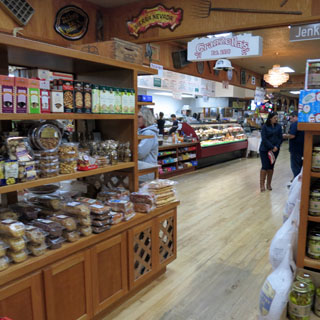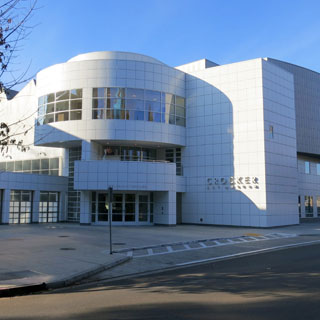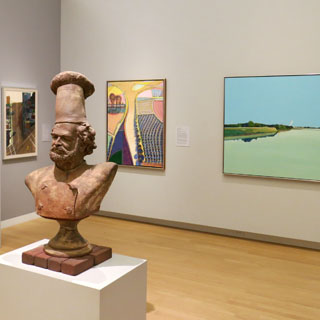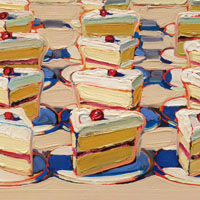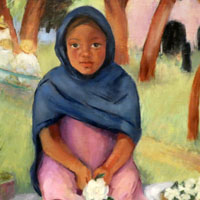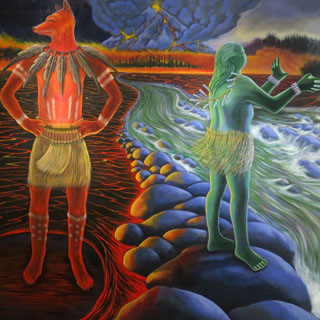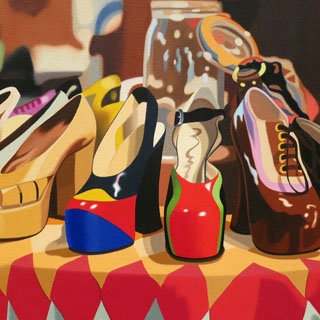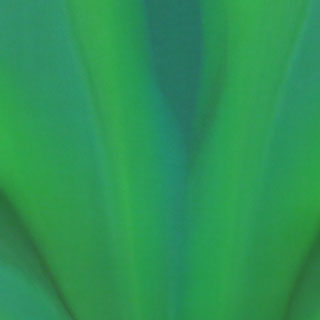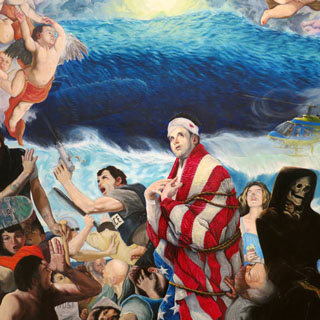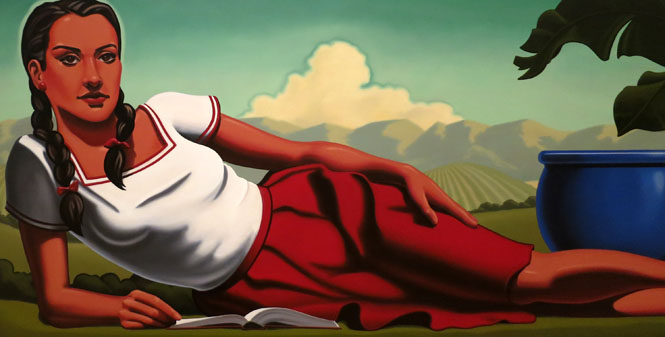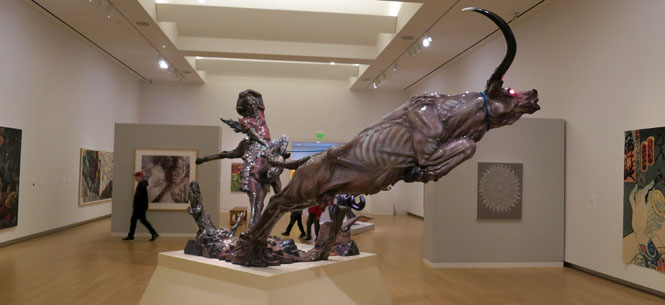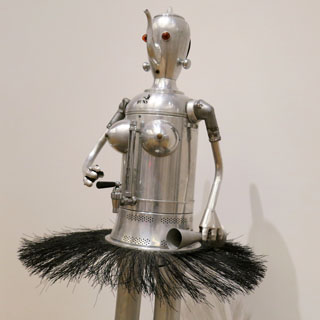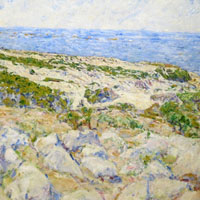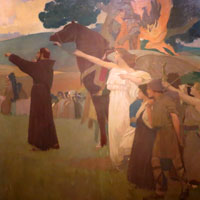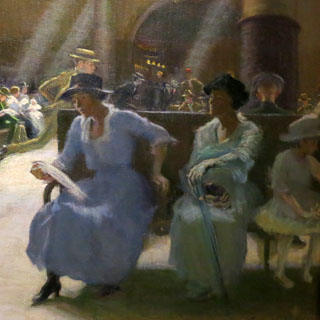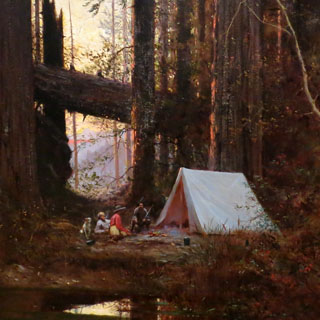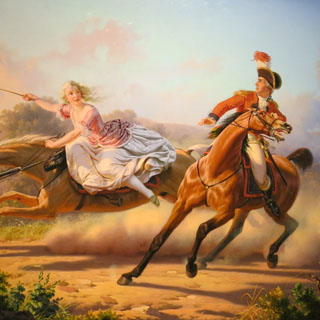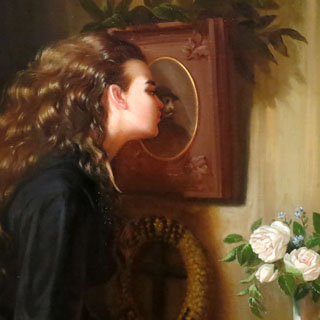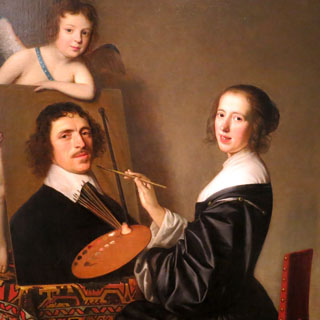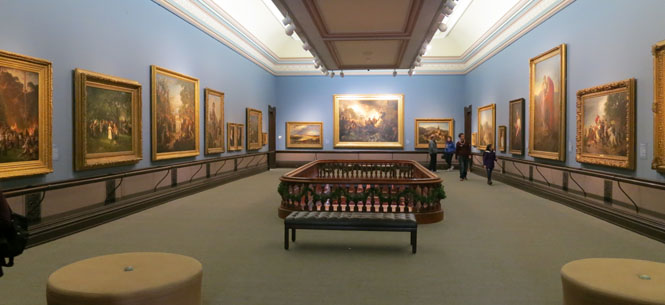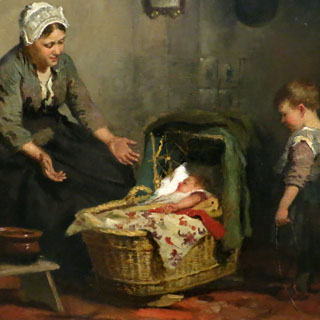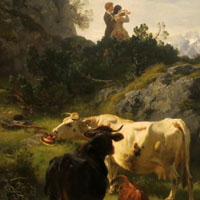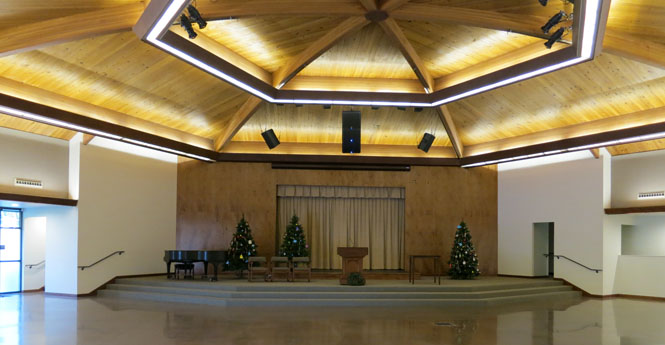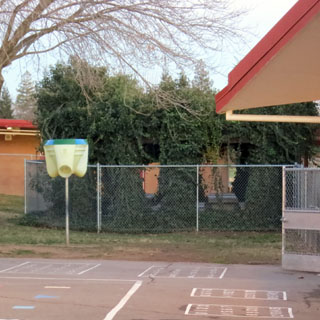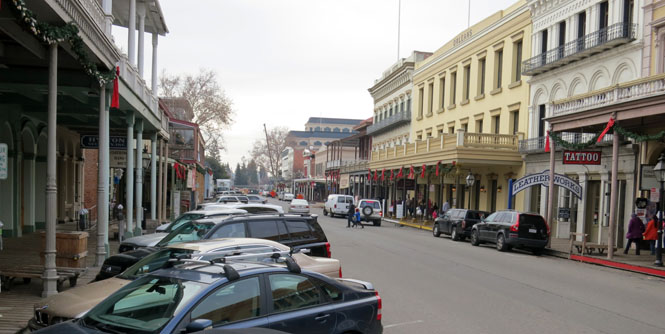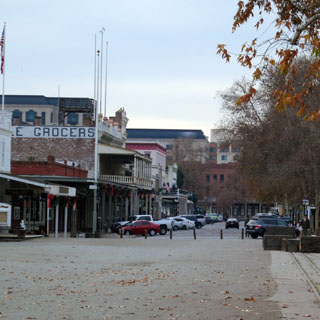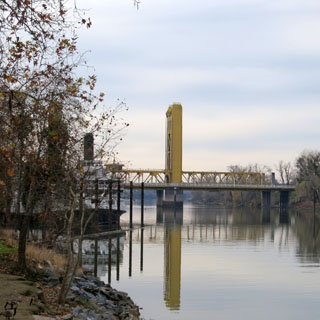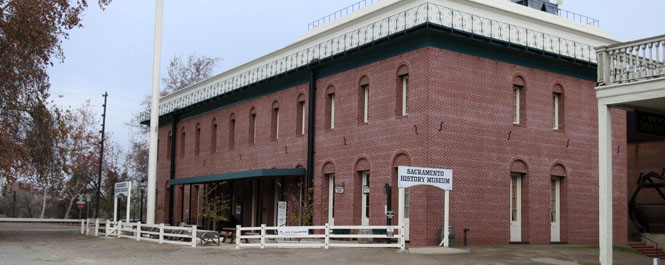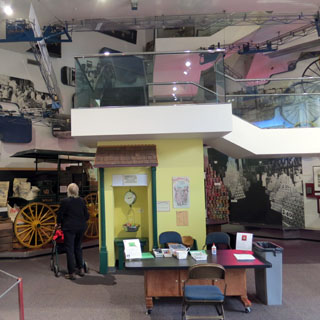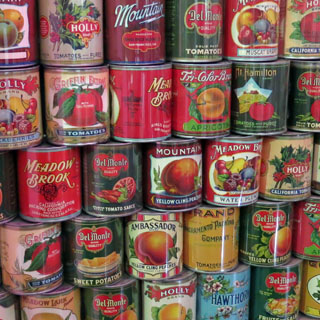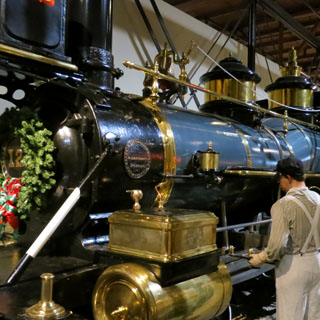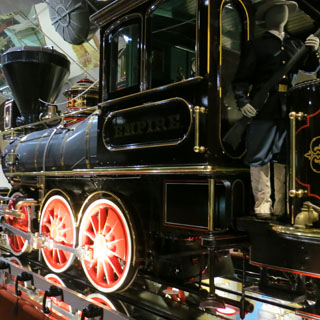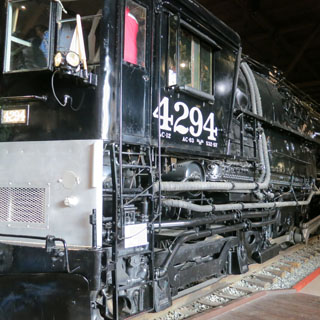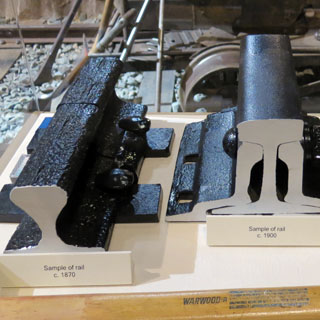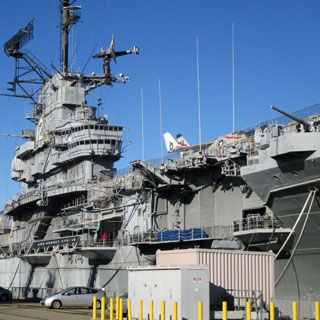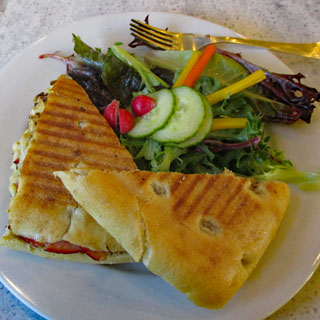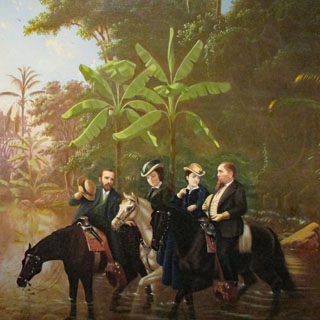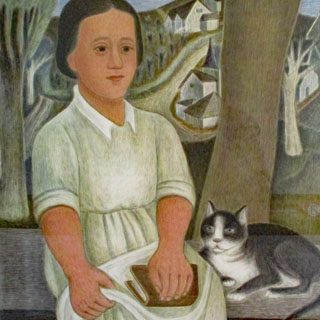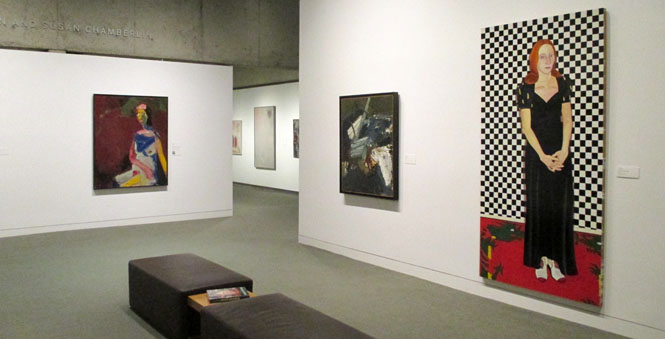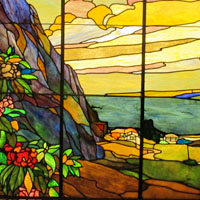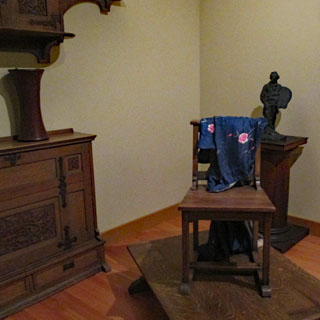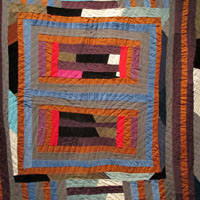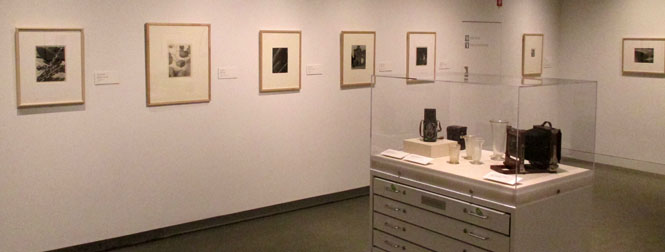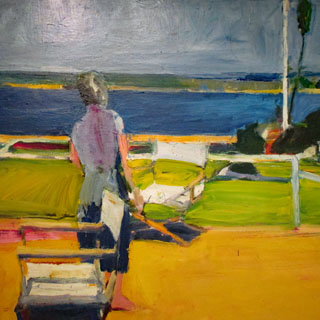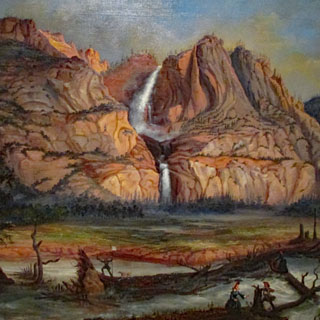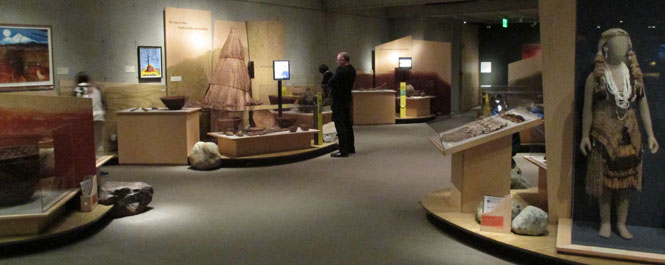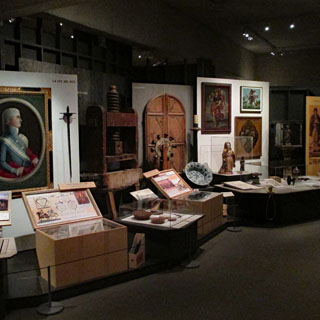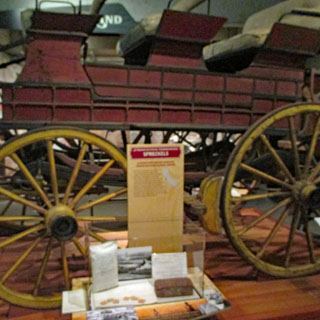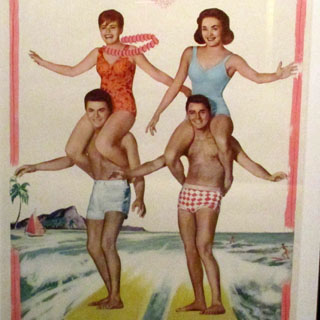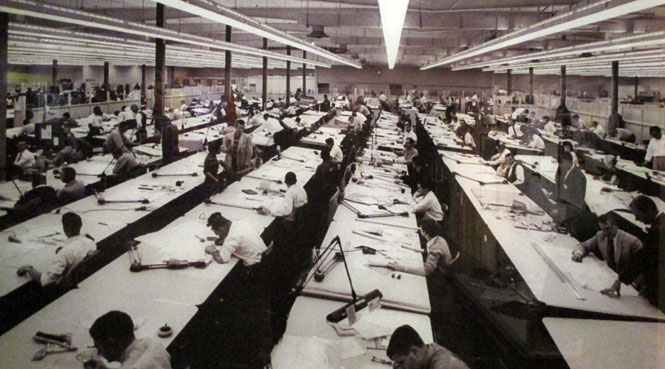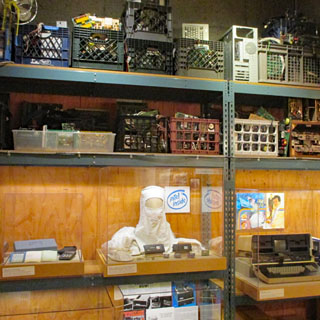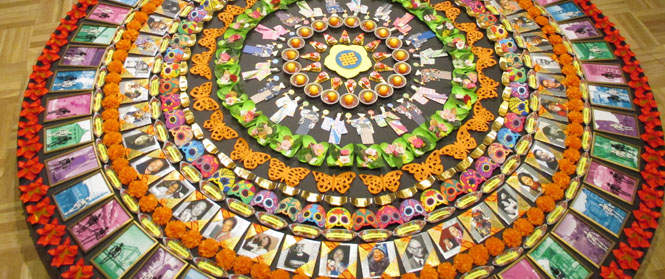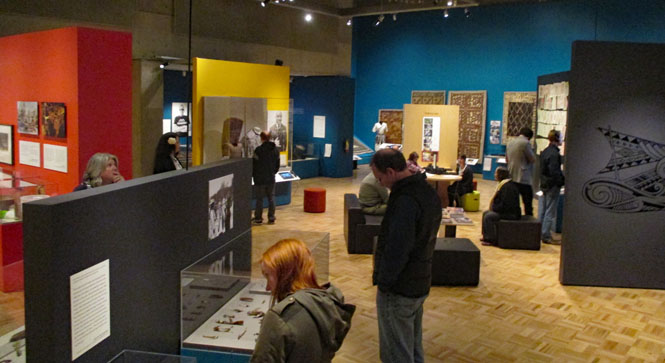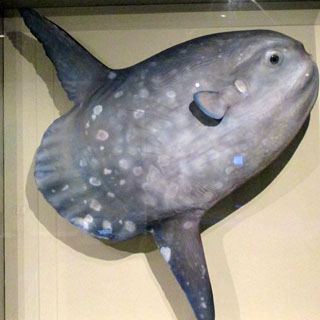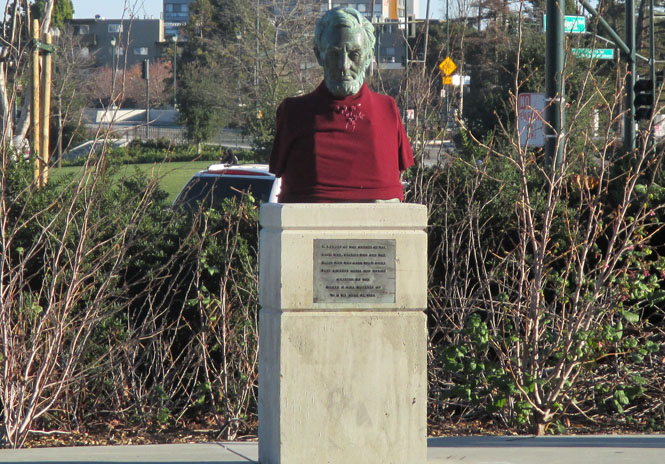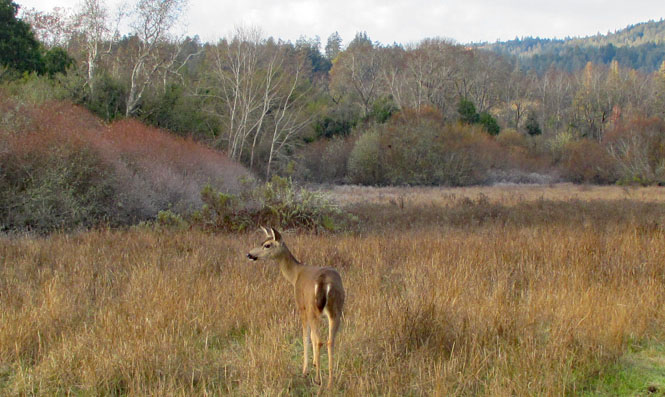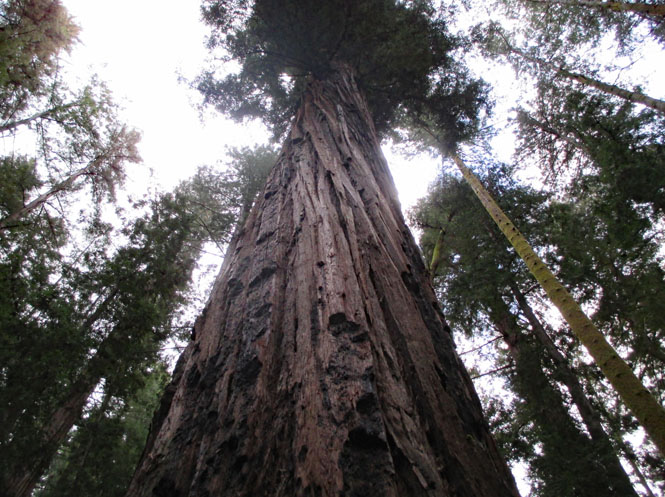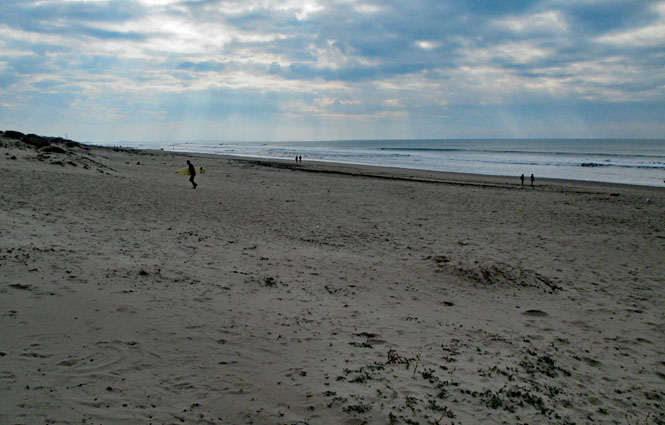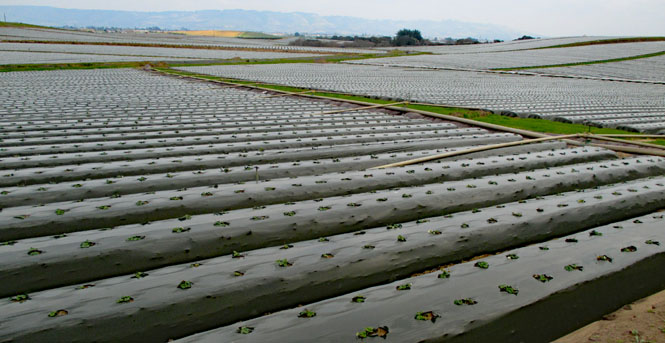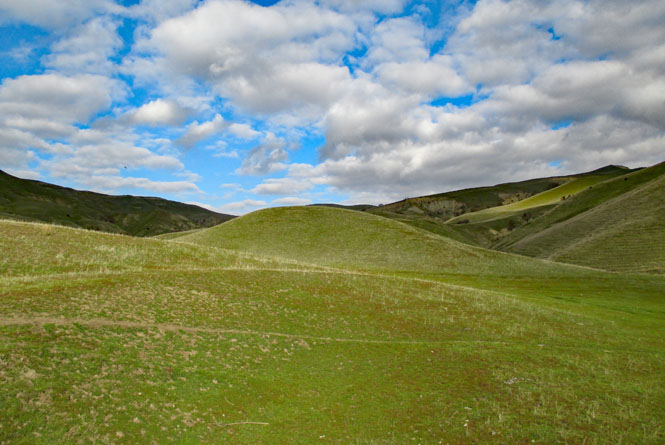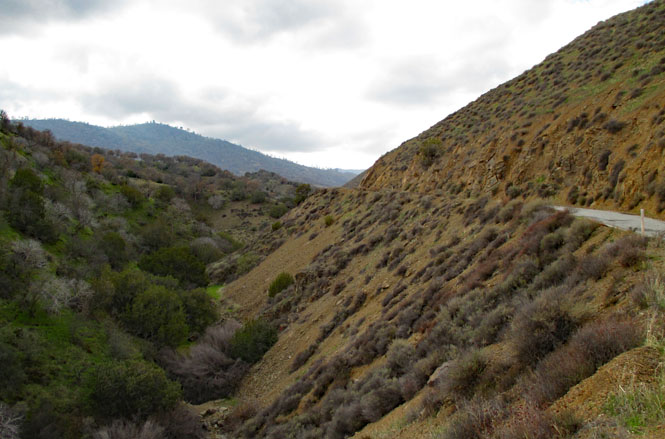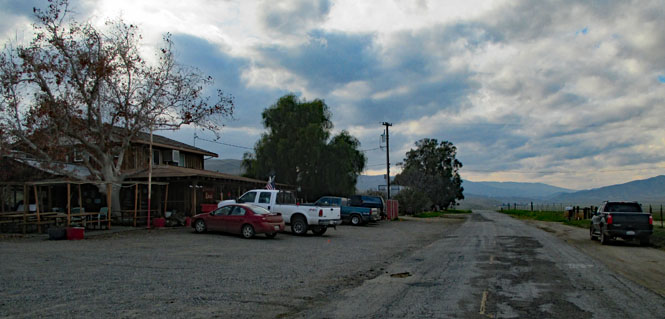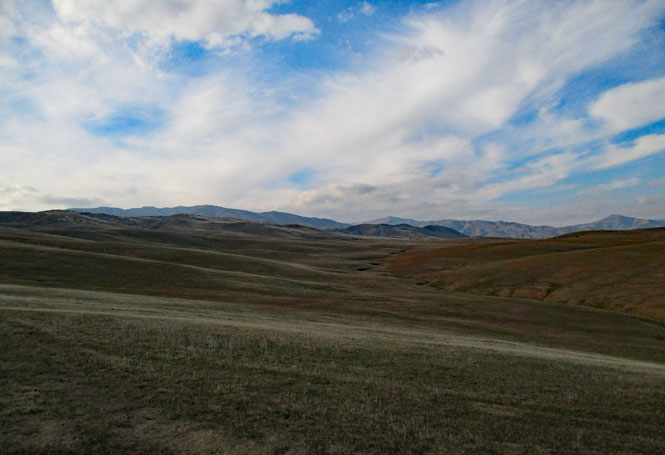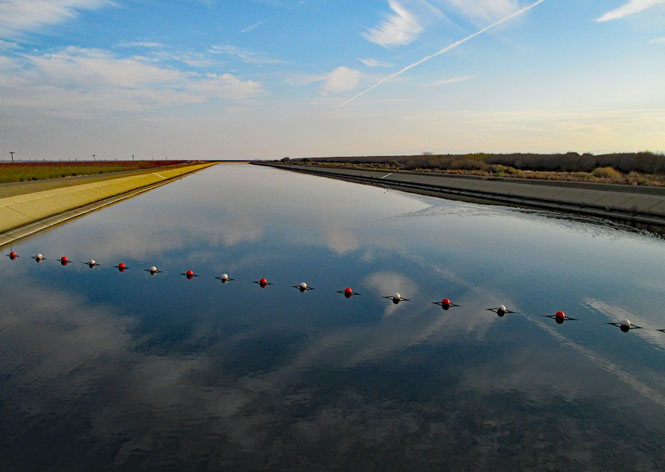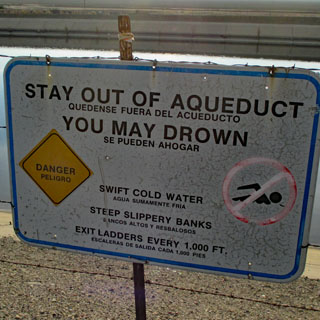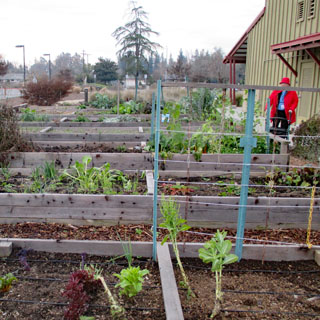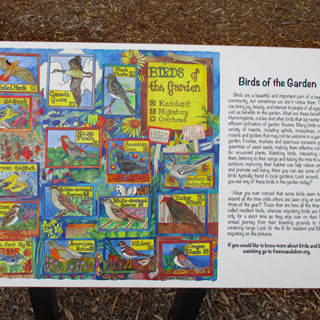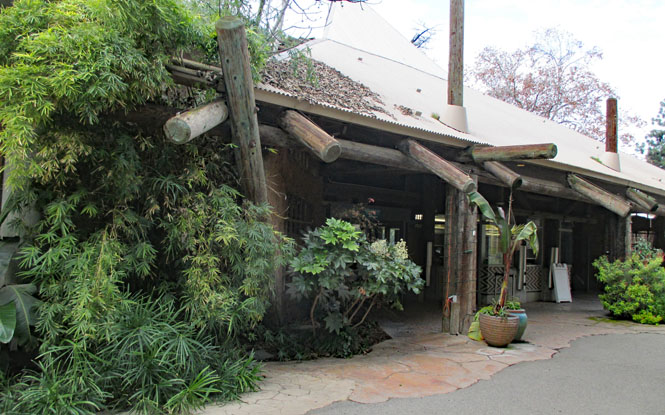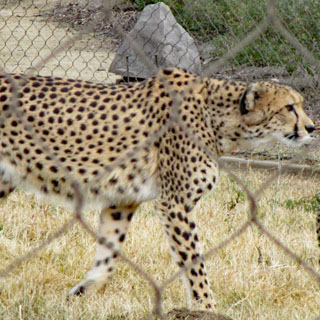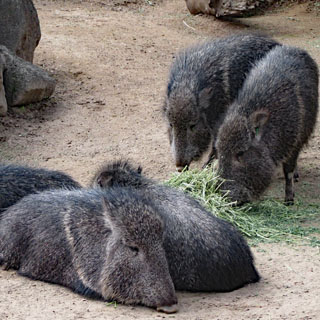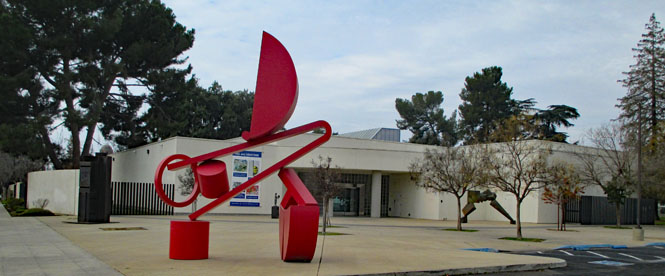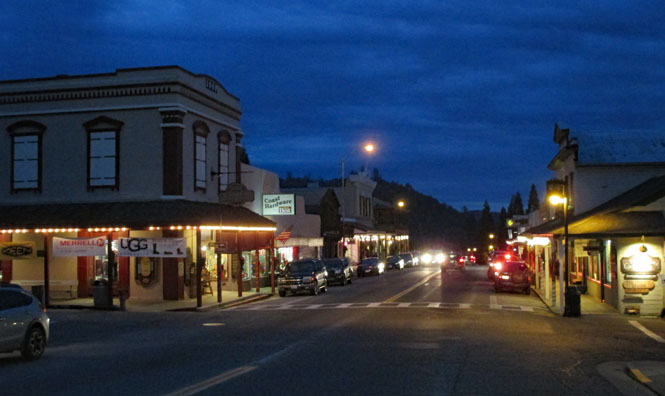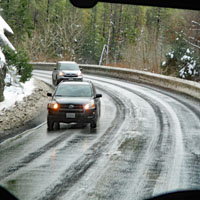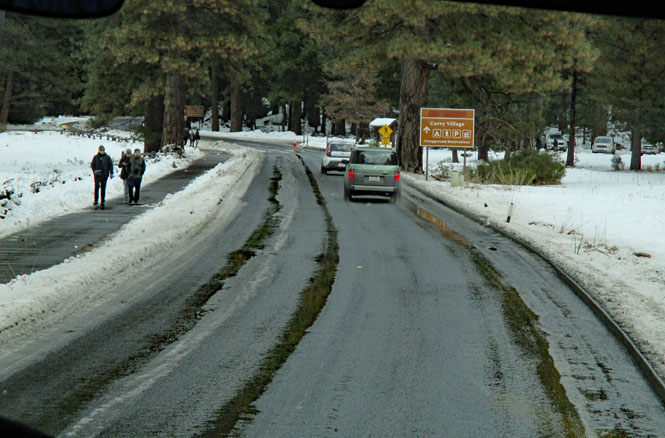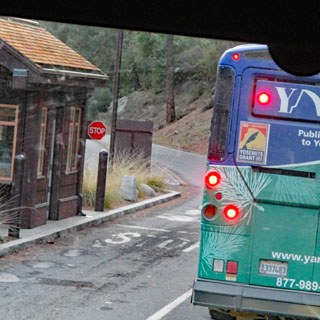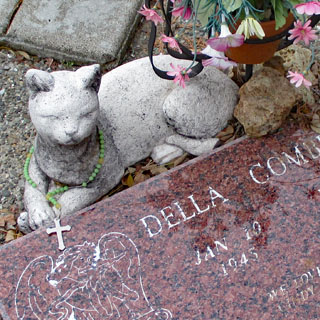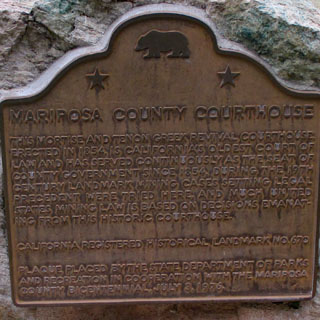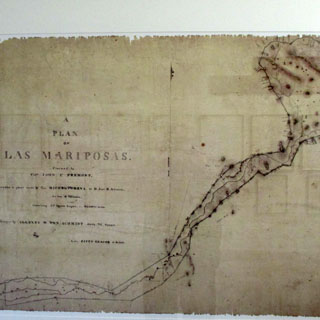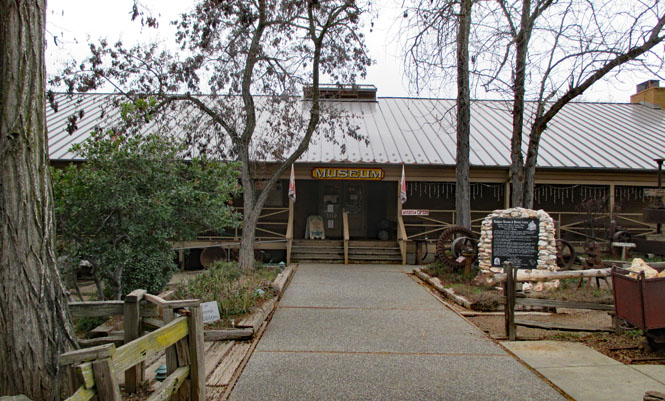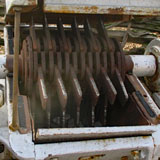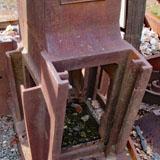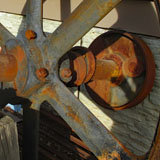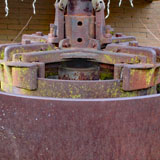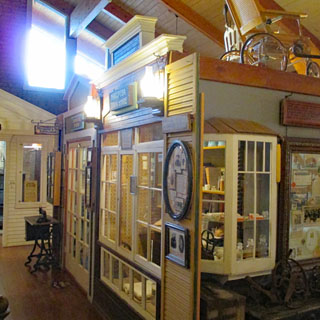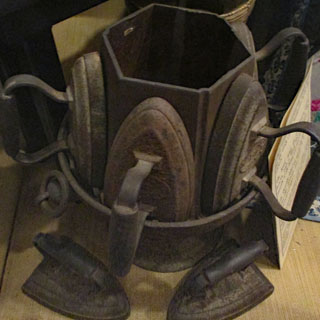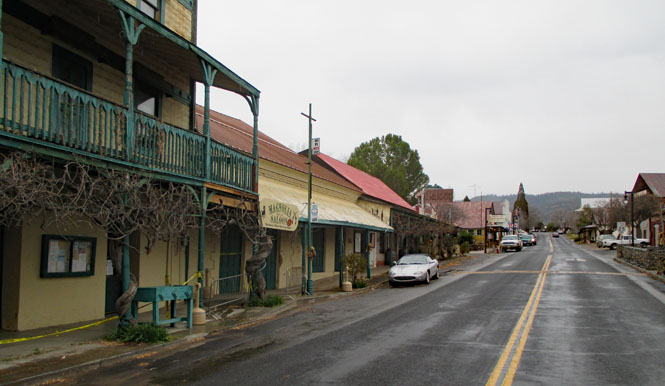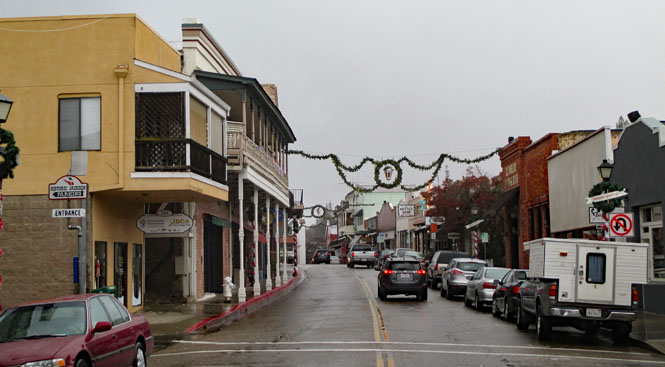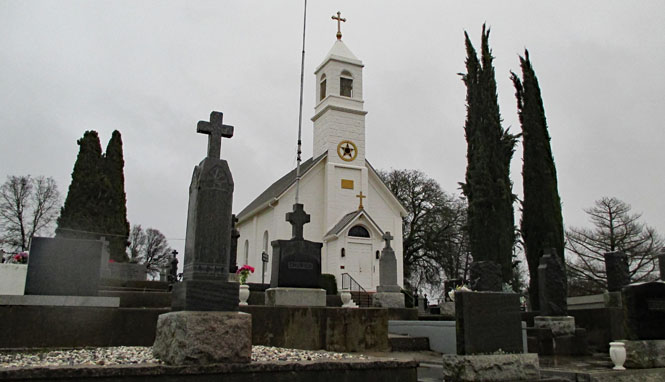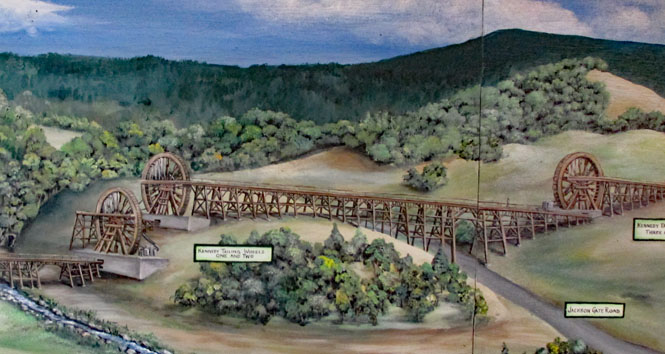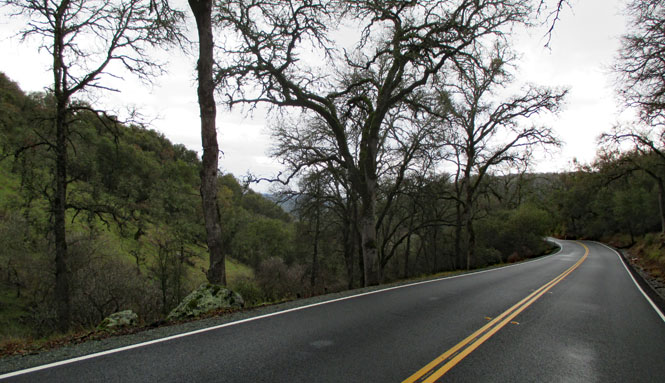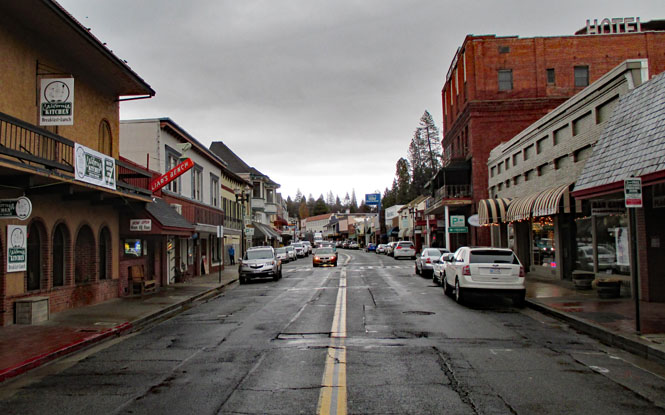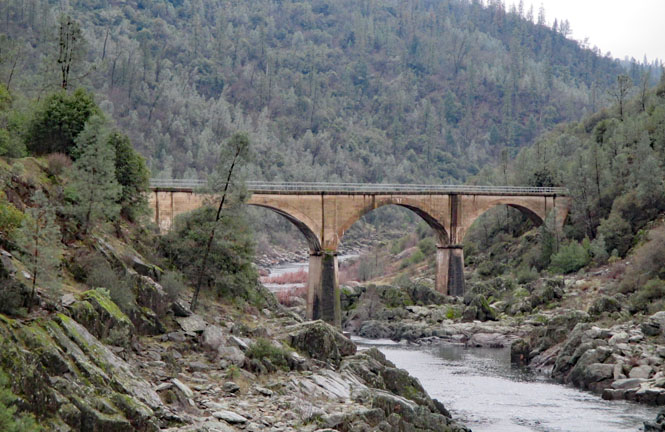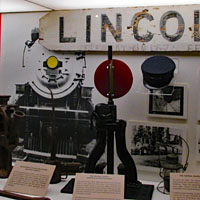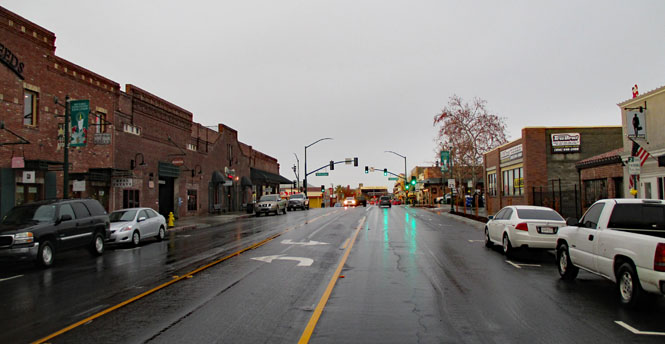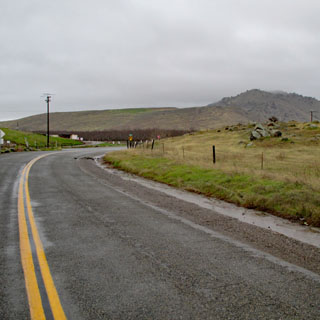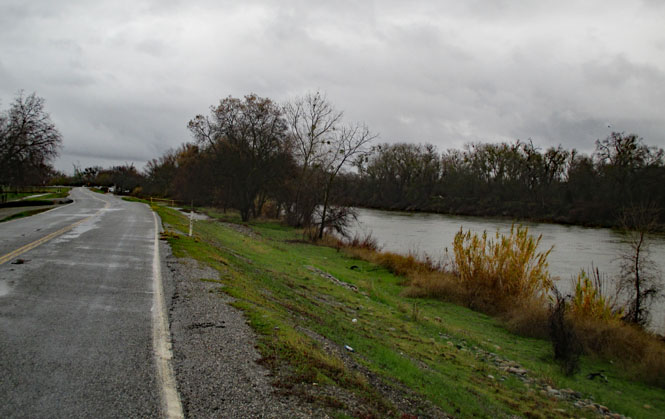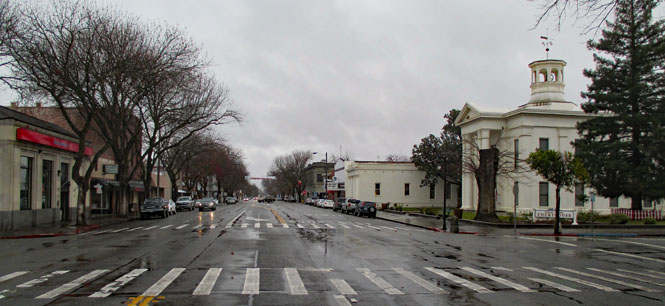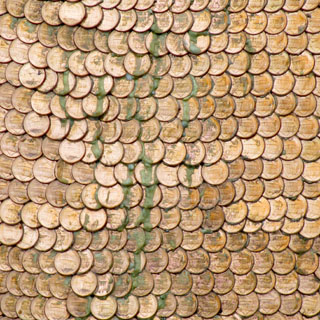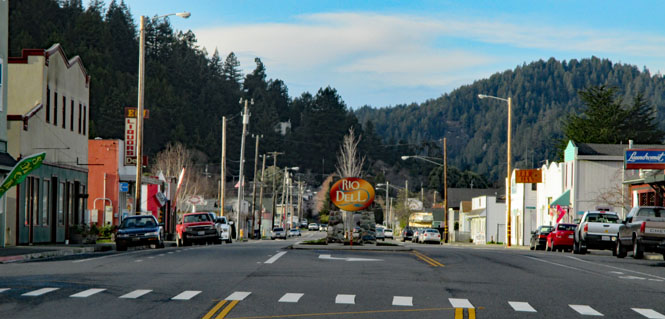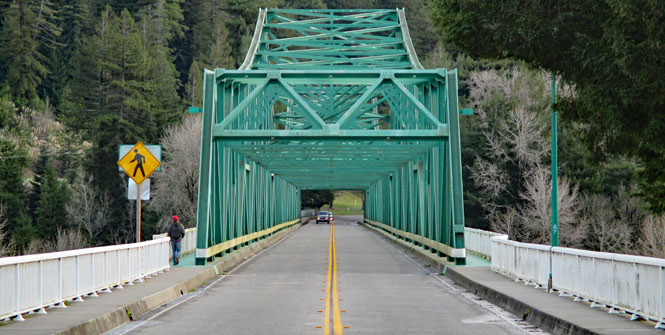December 28 to January 6, 2016

A trip by Awanna and Daniel. Our broad goal was to keep generally in the upper half of California. The only specific goal we had was to visit the Haggin Museum of Art in Stockton, a place neither of us had been and in a city (Stockton) that you generally drive around rather than visit.
 California
California
A traditional stop at the One Log House. It's the right distance for the first break, and they've got the best selection of redwood stuff to poke around.
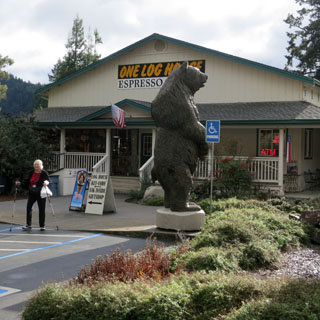
Willits has a convenient city park for lunch, but it's rather cold this day.
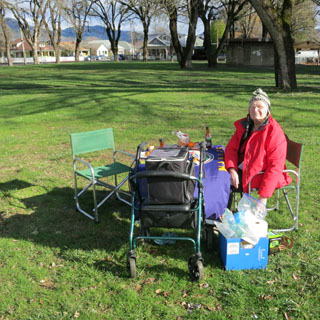
Williams, California.
Granzella's is a big deal in Williams (and now includes a large hotel) but, even though they've been here for forty years, I've never stopped. It's worth the visit.
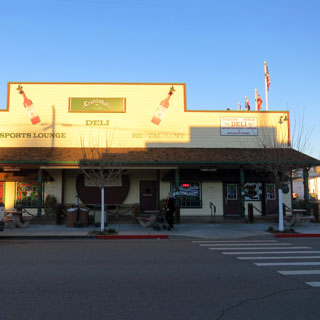
Most any flavor of olives you'd want (but not lemon).
Ask what sort of pies they've got. We're eating in the wine room

The Crocker Art Museum has been a fixture in Sacramento seemingly forever. I first visited as a small child (as has most every Sacramento elementary school student). But, the Crocker is now far larger than it was. The new wing (below right) is connected to the original gallery, but the two are distinct so the charm of that first building has not changed. You no longer need to walk up all those stairs to enter.
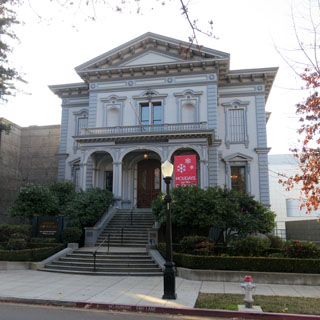
A special exhibit of the drawings of Albrecht Dürer was open, but as is the usual case for these things, no photography was allowed. A couple dozen magnifying glasses were available--very helpful considering the small details of his ink-work.
Photography was allowed in the rest of the museum (except for any other traveling exhibits). The Crocker has really done a good job with their collections. As proper, there's an emphasis on California artists.

Unusual views of the Sacramento Delta and the steep streets of San Francisco (we'll see this same artist later in Oakland).
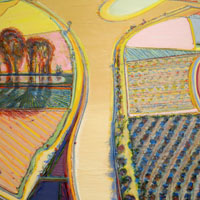


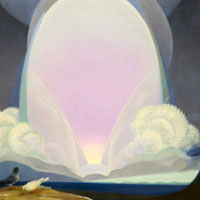
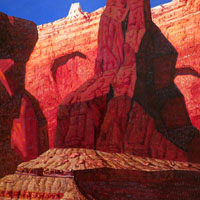
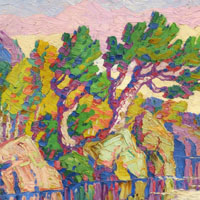
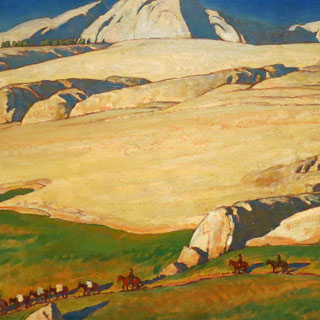
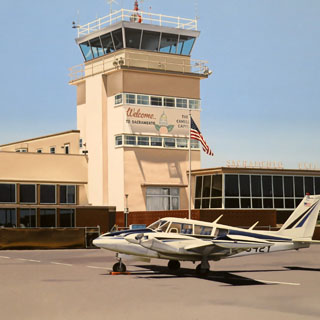
I'll call your attention to the bird...



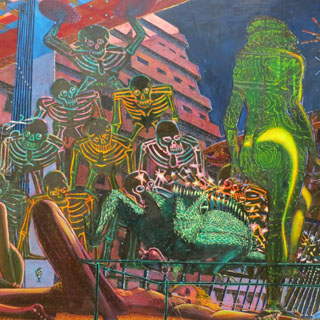
She's in the style of the artwork on the paper labels on the shipping crates of California oranges.
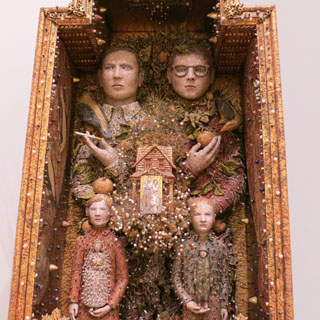

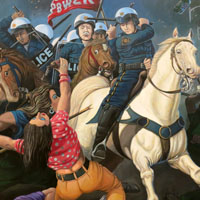
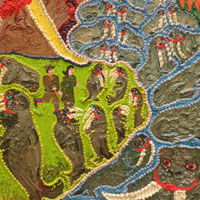
Stopping for lunch in the museum cafe.
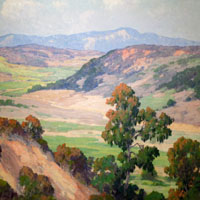
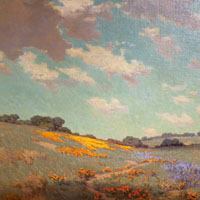

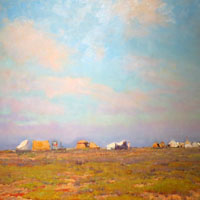

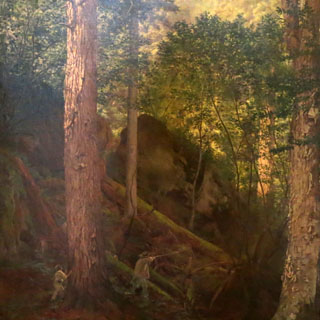

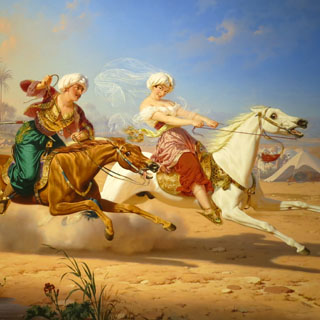
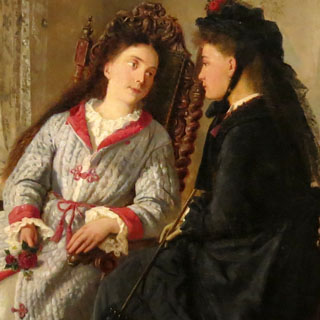

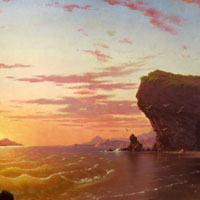
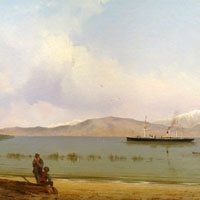

Sunday Morning in the Mines: probably the painting most remembered by all those young student visitors from decades ago (it was the first one you saw when you came in the doors).





A special exhibit of the sculpture of Al Farrow "Divine Ammunition." Photography was not allowed, but these two smaller works were outside the doors. Farow uses bits of ammunition and guns and related debris from battlefields to create detailed cathedrals and mosques and temples. It's really quite stunning what he's done.

The Unitarian Church in Sacramento. The main building (below, left) once looked similar to the classrooms (below right) using the hexagon as a repeated theme. But, durability and rain-proofing in a building must eventually take precedence over style (if the building is to survive the years) so here it is...
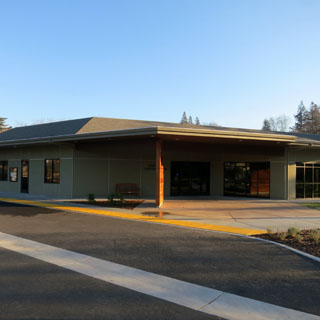
Fifty years ago a magpie by the name of Captain Bill was caught (and later tamed) between those twin trees in the back.
The interior has not really changed much over the decades, but the removal of interior walls (and replacing the old concrete beehive exterior walls) has expanded the space.
My elementary school (grades 1st, 2nd and 3rd) and house.

Awanna taught for thirty-five years, mostly at the Arthur Dudley Elementary School. Go Red Dragons!
The trellis eating area was named for Awanna when she retired.
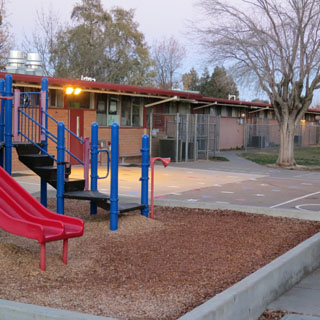
Old Sacramento.
The Pony Express had its western terminus here. You'll find a similar statue at the other end of the line, in St. Joseph, Missouri.

That's the I-Street Bridge (1916) on the left, and the Tower Bridge (1935) on the right. The Tower Bridge was originally silver, then repainted ochre in 1976 and since 2002 it's gold. While the gold color was widely supported and received the most votes, the result is controversial.

The Sacramento History Museum.
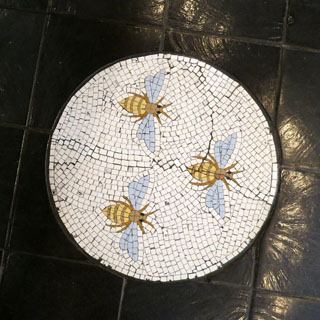


A young girl dies, her parents collect all her things and put them away in a trunk under the stairs. Many years later, the trunk is discovered and opened... (below right).
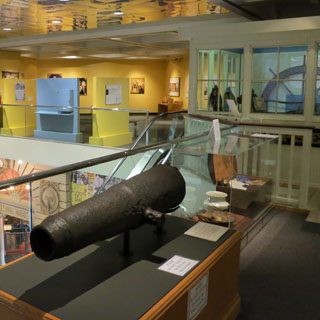
 The California State Railroad Museum.
The California State Railroad Museum.
Beginning with the first transcontinental-railroad and continuing into the seventies, Sacramento was a major center of railroading. That's gone now; but, the railroad museum has retained a lot of that heritage.

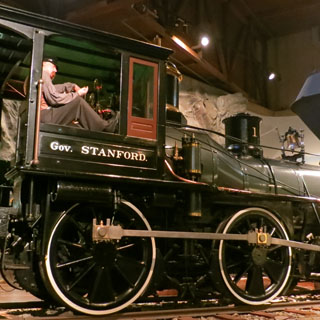
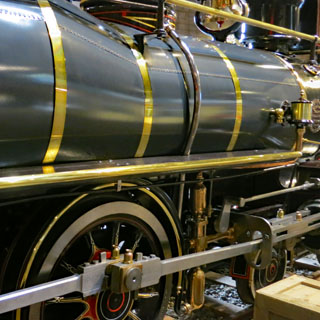

The optimization of steel rails (and the wheels that roll on them) was one of the early examples of industrial age engineering backed by sound science. There's no point putting steel where it isn't needed (and rails represent a lot of steel), but failure when you don't have steel where its needed is almost always catastrophic. Those early shapes were inefficient and weak--a bad combination.

The Oakland waterfront. That's FDR's old Potomac on the left and a floating lighthouse on the right.
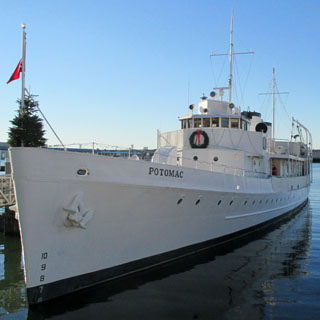
Oakland embraced container ships over bulk cargo and therefore Oakland is the center of shipping in the bay (not San Francisco).

Jack London Square. One hand open; one fist closed. London lived off and on in Oakland growing up (when not sailing the Pacific or serving time in Buffalo, New York).

The Alameda Naval Station is now out of operation, but there are still a few Navy ships tied up. Additionally, the USS Hornet is here and is open for tours.
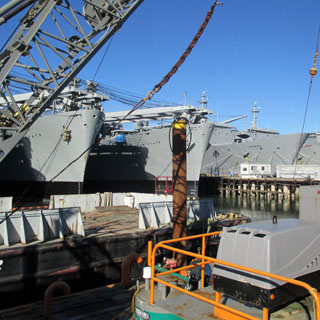
We had heard that the largest container ship to ever visit the Bay would be here this day (CMA CGM Benjamin Franklin). And, so it was, but not at the spot where we waited to see it (along with a handful of other hopefuls).
Looking from Alameda, that's San Francisco across the bay.
The Oakland Museum of California opened in 1969. We'd never been.
But, first; let's have lunch in the museum cafe.
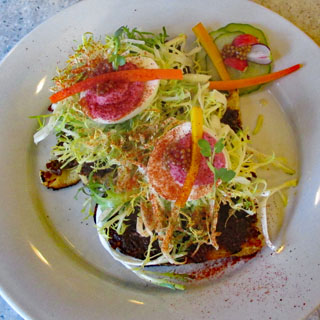
The museum has several wings (History, Art, Natural History, Special exhibits) that are connected through an open-air plaza. It's a bit chilly walking from one to another. Parking is underground, and is very handy. Make sure you validate your parking ticket--you'll save several dollars when you leave.

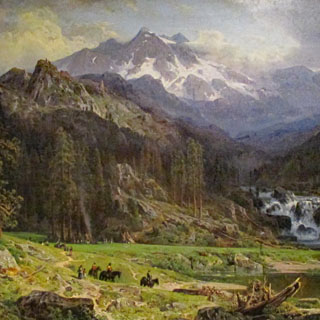
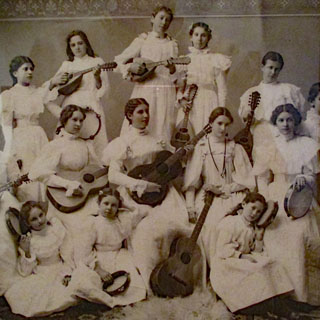
I didn't know that Dorothea Lange lived just up the road in Berkeley. This museum has her personal archive, including some 25,000 negatives. Each drawer opens to reveal photographs that are now so famous you might forget that somebody was there to take it.

By zigzagging back and forth, you should be able to catch all the galleries--but, you could still miss a few things. I think the building expects (or demands) that people wander around.
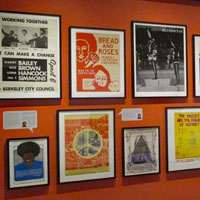

From the designer of this California furniture: if anything in your house isn't beautiful or doesn't serve a purpose, get rid of it (or words to that effect).
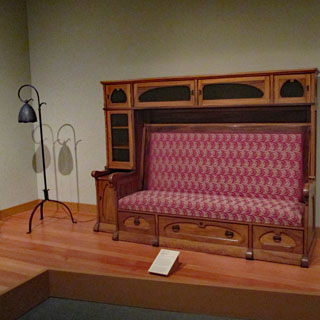

An exhibition of quilts from a single designer. He designed them, but the needle-work was farmed out.
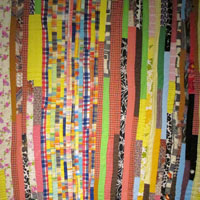
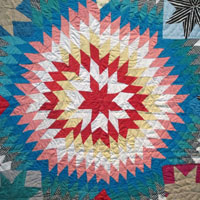


An exhibit room dedicated to the f/64 group (Ancil Adams being perhaps the most famous member). Dorothea Lange was not part of the group (at Manzaner, Lange took pictures of people while Adams took pictures of mountains).
Group f/64 Manifesto (excerpt)
"The name
of this Group is derived from a diaphragm number of the photographic lens.
It signifies to a large extent the qualities of clearness and definition of
the photographic image which is an important element in the work of members
of this Group."
"Group f/64 limits its members and invitational names
to those workers who are striving to define photography as an art form by
simple and direct presentation through purely photographic methods. The
Group will show no work at any time that does not conform to its standards
of pure photography. Pure photography is defined as possessing no qualities
of technique, composition or idea, derivative of any other art form."
This Wall Street Journal article talks of the differences between the two: here.
There's no telling what you'll see around the next corner.
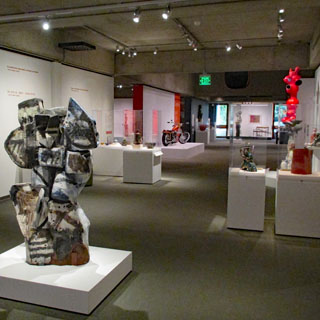

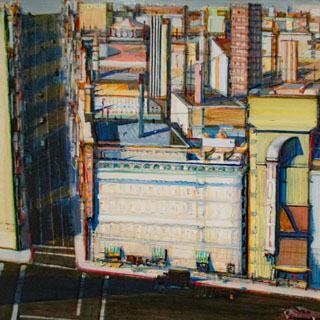

Early California History.
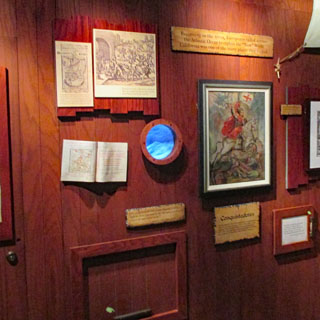

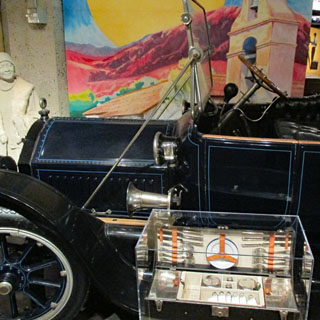
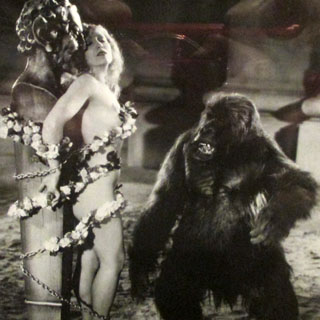
The engineering department at Aerojet. This was once the largest employer in Sacramento (during the Apollo days).
A bit much, perhaps, saying that California has changed the world; but, there's a good case to be made.

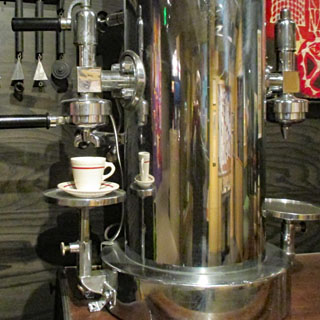
A special exhibit on the day of the dead celebration and how it fits into California's culture.
Another special exhibit: this one presents the many connections between the people of Polynesia and California.
A video of a steady flight at a constant altitude around the entire San Francisco Bay takes eight hours. It's mesmerizing (we stayed for twenty-five minutes).
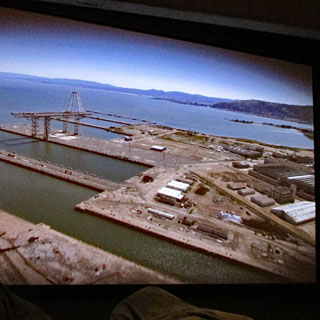
That bird spends more time in the air than any other, and that fish is heavier than any other. Both are optimized to an extreme.
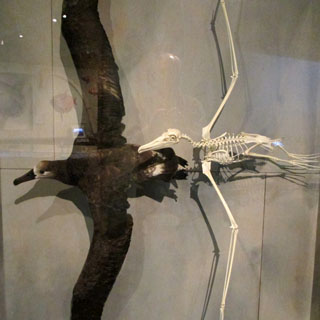
Somebody must have thought that Abe Lincoln looked a bit cold sitting in front of the Oakland City Hall.
Honest; we were in a real herd of deer. But, at least this one stayed for the photograph.
 Henry Cowell Redwoods State Park
is not far from Santa Cruz. There are also a few other State Park
groves in the area, a remarkable thing considering the extensive
logging in this area during the last century.
Henry Cowell Redwoods State Park
is not far from Santa Cruz. There are also a few other State Park
groves in the area, a remarkable thing considering the extensive
logging in this area during the last century.
The level walking path through the grove is popular with local runners. We walked the circuit at a proper pace for looking at trees, and were passed several times by the same runners doing their laps.
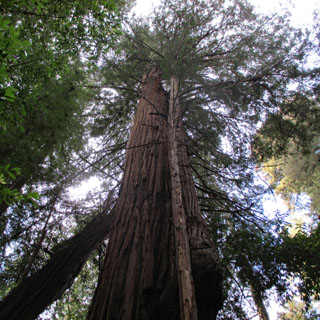
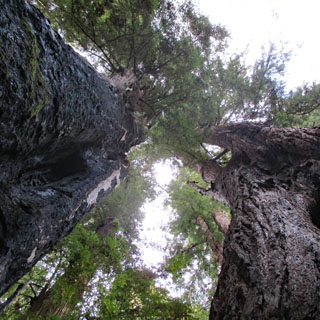
California Bay leaves.
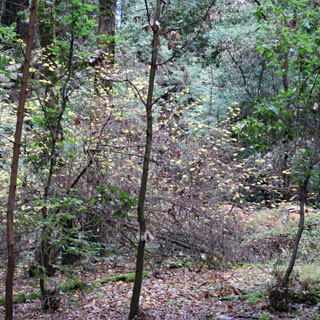



Perhaps it's not the season for Banana Slugs to be visible, but we did see this T-shirt. That's ginger on the right.
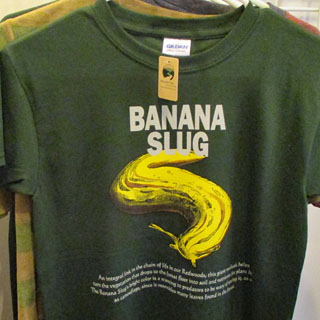
 Sunset State Beach has
protected picnicking facilities. Above the hills, the wind was pretty
strong.
Sunset State Beach has
protected picnicking facilities. Above the hills, the wind was pretty
strong.
Being able to say you were out surfing on New Year's Day is worth the cold, I suppose.
Most anything can grow in Salinas Valley. Here we have strawberries.
Paicines, California.
This is Panoche Road, which will take you across the Diablo Range of the Coast Mountains. If you follow the road through Mercey Hot Springs, it'll be paved all the way to I-5.
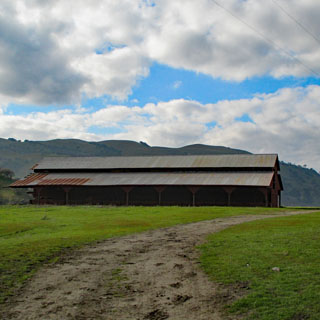
Sometimes the road is only a single lane wide, but there probably never is enough traffic for that to be a concern.
Panoche, California
Panoche Road becomes Little Panoche Road (best I can tell, there is no Big Panoche Road).
Mercey Hot Springs is named for J.N. Mercy. The resort opened in 1900 (evidently, the spelling was changed so that it could be copyrighted).
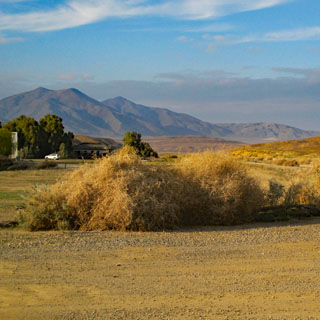
The eastern slope of the Coast Range--a beautiful area.
Dear North,
Thanks for the water!
Sincerely yours,
South

The Fresno Unitarian Church is pretty impressive.


The Fresno Chaffee Zoo is quite a good one. We only visited part of it.
They have both types of elephants--those with the big ears, and those with the small ears. The elephants have to work for their food.
I suppose given the choice, I'd rather encounter in the wild a Malaysian Tiger than the much larger Tamil Tiger.
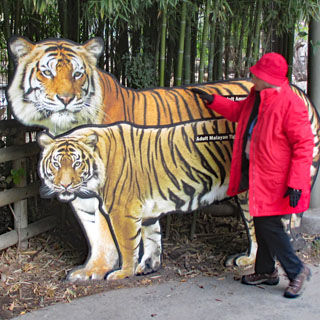
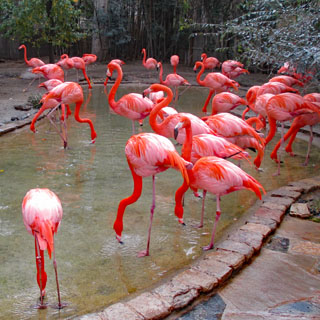
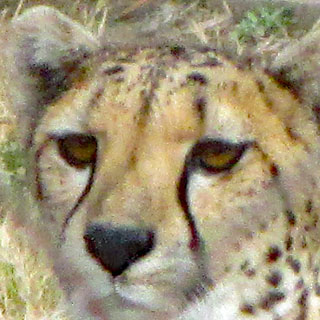
They've done a nice thing with this simulated watering hole.
It's time to feed the lions. As seems to be the thing for all progressive zoos, feeding time is used to train the animals to help the keepers evaluate their health. You'll see the keeper on the right using a pair of tongs with food and a whistle to encourage the lion to move about so she can be examined (or so that someday she can be "tricked" to receive a necessary injection without struggle).

Andean Condors are very large.
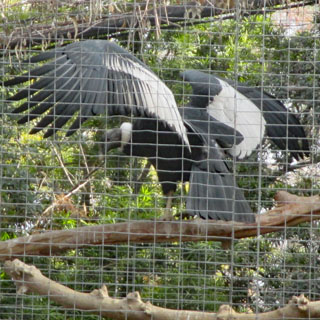
These are not the two most beautiful animals in the zoo, but I'm sure they have their fans, just the same.

The Fresno Art Museum does not allow any photography as its galleries are entirely devoted to special exhibits. We were favorably impressed with those on display (even if the heating system was broken and it was very cold inside).
Mariposa, California.
Isn't there some sort of shuttle service to Yosemite? Let me check...
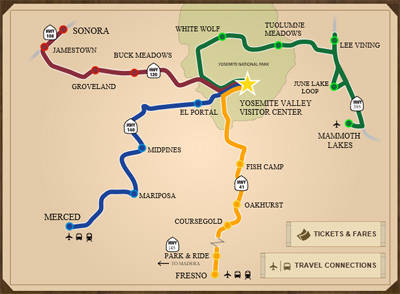
This is a terrific transportation deal. Round-trip from Mariposa to Yosemite is just $12, and that includes the entrance fee into the park. The Senior price is only $8.
We boarded the YARTS bus (the blue line) at one of several stops in Mariposa at a convenient morning time. We're going to Yosemite!
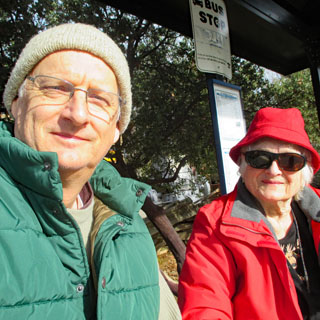
The road didn't really seem icy, but better the bus driver than me. In any event, we'd be returning after sundown (with snow expected that night), so there's no telling what sort of shape the roads might be in.


The YARTS bus does nearly the same circuit as the valley shuttle bus, so you'll be able to get off without much trouble. In fact, the busses use service roads that are not open to cars, so it's even easier.
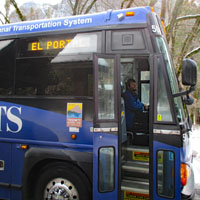
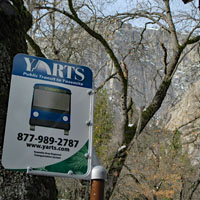
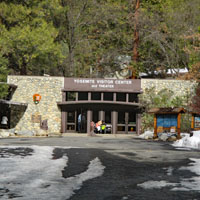
This is the view from the visitor center. Actually, the view from most anyplace in the valley is just as spectacular.
We really didn't have much more time than to go through the visitor center, eat, watch the park movie and take the shuttle buss towards the Ahwahnee Hotel.
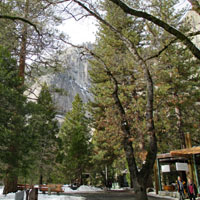
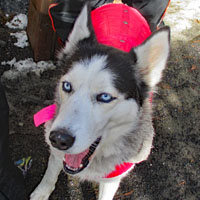
My friend John Muir.
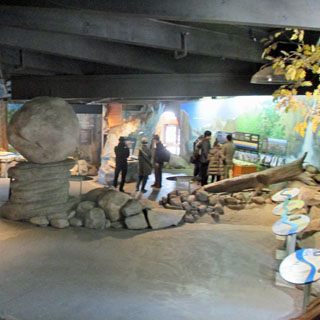
The valley shuttle service is free and runs every twenty minutes. You'd be advised, however, to download the route before you arrive--there are no maps at the stops. In some cases, it's more efficient to get off at a stop and then catch the next bus going the other way (to avoid the out-and-back bits of the route).
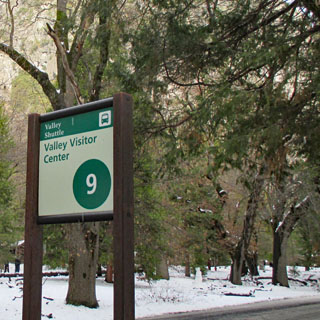
That crowd is part of an Amtrak group. They'll be riding the same YARTS bus service, but theirs is an express bus back to Merced (and the train) so there's no worry for them about having enough room on the bus.
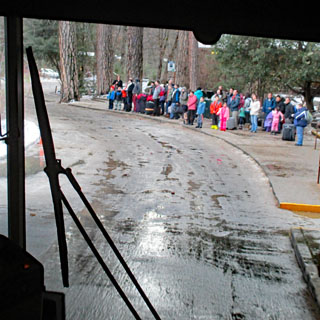
The old Saint Joseph's church in Mariposa. It dates from the gold rush days.
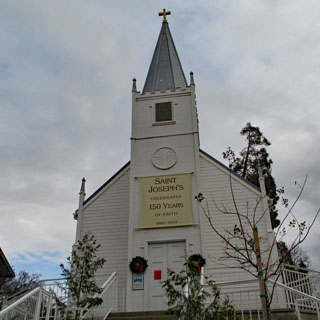

The Mariposa Courthouse is the oldest operating courthouse in California. We were allowed upstairs to watch the sentencing phase of a trial. The man was guilty, it only remained for the judge to hear arguments from both attorneys and to pass sentence. It's all very interesting.

A framed old map on the first floor of the courthouse. This county was once huge. Notice that Utah and New Mexico are on the border with California. On the right is Fremont's land grant map that shows his property. The man owned the entire mining district.
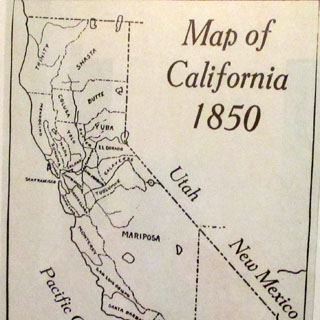
The Mariposa History Museum is very good. We wanted also to visit the State Mining Museum, but that one is operated by the state, and due to budget issues, it's closed today. The volunteers at the Mariposa museum keep their museum open--good for them.
Lots of mining equipment outside...

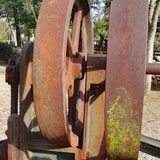


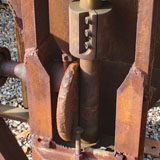

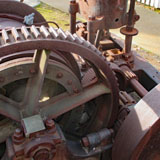
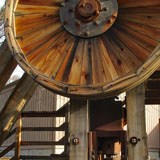
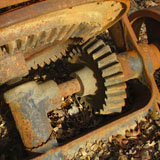
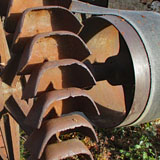

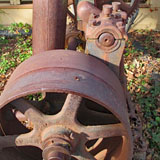
...and even more displays inside. This museum is packed (which is how all museums ought to be).
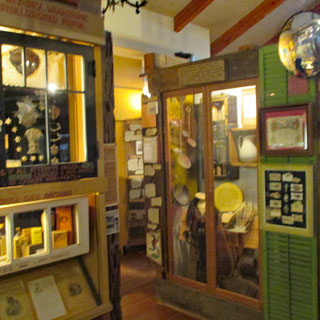
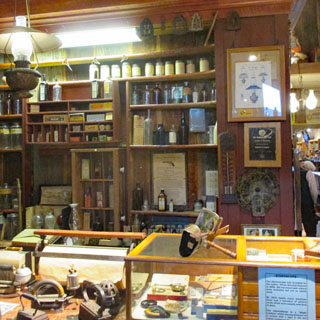

Mariposa means butterfly. A local woman makes these butterflies from dicarded plastic bottles. For magnets or mobiles, she (and her helpers) have made thousands.
Driving north on CA-49.
Coulterville, California.
An unexpected butte.
Wet roads, but mostly it wasn't raining hard when we passed through.

Copperopolis, California. It's fun to say. Copperopolis.
A back road through the mining district.
San Andreas, California.
Jackson, California.
The Saint Sava Serbian Orthodox Church in Jackson is the oldest Serbian Orthodox Church in North America (1894).
The Kennedy Tailing Wheels were used to move waste from the gold mine to a holding basin in a gulch a mile away. They were in operation from 1914 to 1942. The wheels were originally protected by sheds, but the painting (below) shows them open so you get a better idea how they worked.
Only one wheel remains standing, and it is now protected within this glass-front building. Look close at the photo on the right, and you'll see the remains of another.

Continuing the drive north on CA-49.
Placerville, California.
 Gold was discovered at
Sutter's Mill near Coloma.
This isn't the sort of thing that can be kept secret, so it happened that the
whole area was rapidly overrun with miners. Sutter might have made a
fortune, but he didn't.
Gold was discovered at
Sutter's Mill near Coloma.
This isn't the sort of thing that can be kept secret, so it happened that the
whole area was rapidly overrun with miners. Sutter might have made a
fortune, but he didn't.
The current sawmill is a replica. The original site is shown by the marker at the edge of the river.

It's a beautiful bridge. The so-called "no hands bridge" was built in 1911 to serve a railroad working a cement quarry.
The Auburn Courthouse is the second oldest operating courthouse in California. Just as at the Mariposa Courthouse, we were able to sit in during a session in the oldest chamber. This happened to be a pre-trial session where evidence was being allowed (or disallowed) for a murder trial. It's all very interesting.
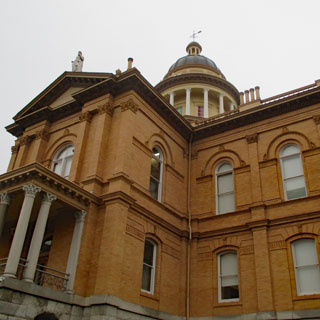

The first floor of the courthouse is now a museum and a display area (currently showing seasonal quilts).
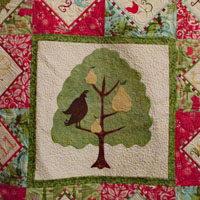
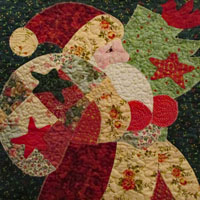


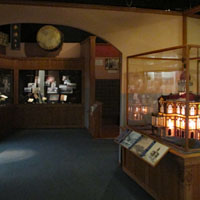
Lincoln, California.
Marysville, California.
The Bok Kai Temple in Marysville dates from 1854 for the worship of Xuan Wu. The first building was destroyed in a fire, and this building replaced it in 1880.
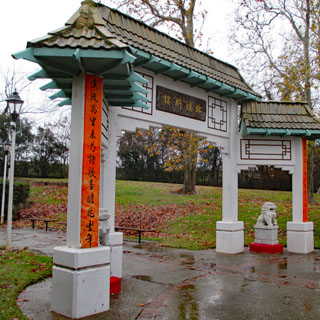
Today, the temple faces the river levy (just a few yards away). Of course, when it as built, it would have faced the river.
Old Marysville just a few steps from the temple.
Part of the Sutter Buttes under the rain cloud.

We are well off the main route, following the levy road next to the Sacramento River.
Colusa, California. Look; there's another courthouse. We didn't check to see if court was in session.
It's Penny the Goose! Penny is a Canada Goose made from thousands (120 of them) of U.S. and Canadian pennies for the 2015 Burning Man gathering. Today, Penny is on the shore of Clear Lake (a more appropriate place than Black Rock desert if you're a goose).
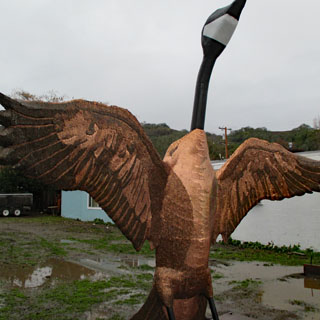
The bridge over the South Fork Eel River in Cooks Valley. This was once the route of US-101 (perhaps it was only CA-1 at that time).
Rio Dell, California.
The Wildwood Avenue Bridge across the Eel River connecting Scotia and Rio Dell.
Not much planning, but we saw quite a bit. No, we didn't visit the Haggin Museum in Stockton, but, we saw far more.
1,322 miles.

